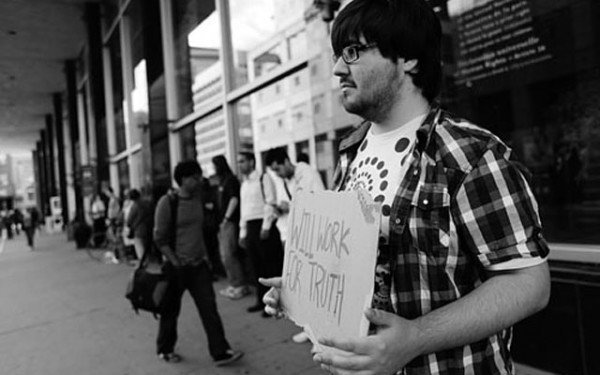At the Expense of Democracy
Stephen Harper Says No to Election Subsidies
A federal election in the spring may be around the corner.
Polling firms have been cranking out seat projections since last fall, and it’s looking like yet another Tory minority.
Stephen Harper announced last week that he aims to get rid of the $2 public subsidy federal parties get for every vote they received in the prior elections.
Strategy aside, trying to understand why Harper made the move is less important than the electoral consequences—when he tried last time in 2008, the ensuing outrage almost took down his government.
Whatever savings we could make by taking approximately $27 million off the books would be offset by a less democratic system. Election results would favour established organizations with large strongholds and a healthy numbers of donors. Small parties with riskier ideas are the ones who will ultimately pay the price.
Jean Chretien’s Liberal government brought the subsidy to life and banned union and corporate donations in 2003 to level the playing field. The result was that federal parties relied less on people with money. It also replaced lost revenue from the corporate ban and the newly introduced personal donation cap of $5,000, which the Harper government later lowered to $1,000.
Public subsidies now cover between 37 per cent of campaign budgets for the Tories and 78 per cent for the Bloc Quebecois. Similar systems also exist in Australia, Spain, Sweden and other European and Asian countries, usually with a mixed public and private model. It’s hardly a “socialist” scheme, as even Australia, with a much more conservative political culture, regards the practice as fairly uncontroversial.
Advertising is the largest campaign expense for all parties. TV ads, in particular, have consumed a fast-growing portion of that budget in the last several decades. Being outgunned on ad spending usually means losing the seat.
Even the comparatively wealthy NDP would have a tough time making noise on the national stage or breaking into new ridings after losing 56 per cent of its budget.
The line in favour of abolition says that a public subsidy is a free ride for parties, who don’t have to work as hard for their votes or build a well-functioning fundraising machine. The National Post’s Lorne Gunter adds that the biggest players are given an unfair leg up. An unpopular ruling party, for example, would rake in a regular subsidy, even once donations stopped coming, until election time.
However, the deck would be stacked against upstarts even more. The actual machinery of a campaign—riding associations, canvassers and lawn signs—can be made very efficient, which partially explains the Tories’ electoral success. Thirty seconds of primetime ad space, though, still costs the same whether you’re the Liberals, the Greens or the Work Less Party.
To expect parties with little to no seats to rely exclusively on individual donations, especially in a recession, is a zero-sum game. Seats can’t be won without sustained income and focused spending, and marginal parties can’t expect enough donations without winning a seat.
Winning a campaign is all about visibility, airtime and sound bites. The subsidy lets parties play the media game, and buffer its ever-increasing costs, while concentrating on building a solid base of local and national support. The Green Party’s first real entry onto the national stage came a year after the subsidy’s introduction, which saw their vote share increase almost six-fold.
Whatever happens to the subsidy in the coming months, though, we need to keep looking seriously at the many flaws in our electoral system. The correlation between the number of votes received and the number of seats won is loose at best, and until that’s fixed, chances are that subsidized votes will mean less than they could.
This article originally appeared in Volume 31, Issue 20, published January 25, 2011.

web__900_878_90.jpg)
_600_832_s.png)



__600_375_90_s_c1.jpg)
__600_375_90_s_c1.jpg)